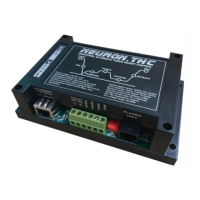USER MANUAL
Dross is molten metal that does not blow away during the cutting process and instead adheres to
the bottom or top of the part in a re-solidified state. There are many factors that can contribute
to the accumulation of dross. The most common are: cutting speed, torch standoff height or
damaged consumables. In most instances, dross can be reduced or eliminated completely by
adjusting the cutting speed to the optimum condition as prescribed in the operator’s
manual. However, there may be times when a simple speed adjustment is not possible or will
have little effect, such as when the thickness of the material or the cutting amperage requires a
slow cutting speed. In this case, dross accumulation is inevitable and cannot be
eliminated. Also, the quality, grade and composition of the material are factors that can increase
the likelihood of dross and are outside of the control of cutting parameters. For example, a lower
quality sheet of carbon steel may be more susceptible to dross buildup due to the increased level
of impurities. Finally, as the temperature of the plate increases from the plasma cutting process,
dross is more likely to stick to the bottom even with optimum parameters.
High Speed Dross
Cause:
When the programmed cutting speed is too fast for the amperage being used or the material
thickness being cut, the bottom of the arc will lag behind the top. When this happens, the high
pressure gas found at the orifice of the nozzle is not as effective at material removal, allowing
small amounts of dross to form on the bottom of the plate. High speed dross is typically dotted in
appearance and cannot be removed easily by scraping with a hand tool. It must be removed by
grinding or machining the finished part.
Solution:
Verify the cutting speed for the selected amperage, material type and thickness. If it already
does, decrease the cutting speed in small increments (5-10 inches per minute) until the best
result is achieved.
Select a lower cutting amperage
Examine the electrode and nozzle for excessive wear and replace as needed.
Low Speed Dross

